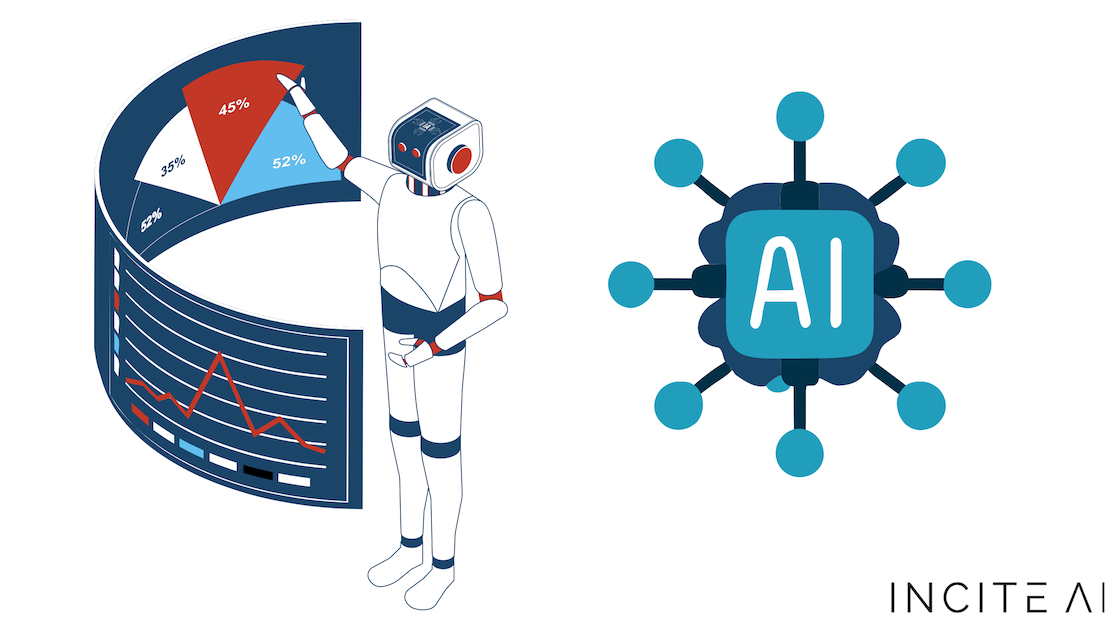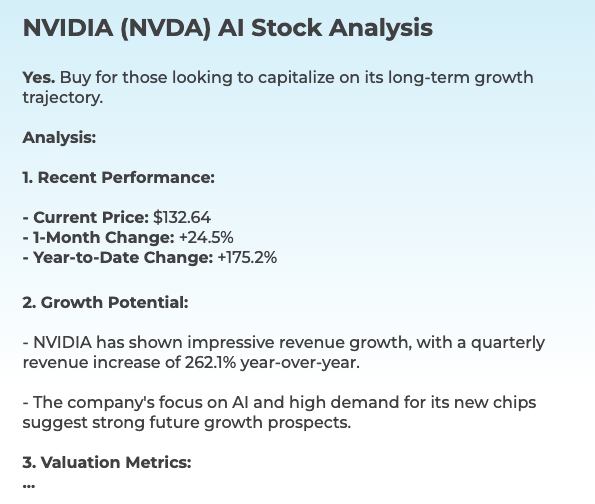20 Recommended Ways For Deciding On AI Stock Analysis Sites
20 Recommended Ways For Deciding On AI Stock Analysis Sites
Blog Article
Top 10 Tips For Evaluating The Integration And Compatibility Of Ai Predictive/Analyzing Trading Platforms
Integration and compatibility are key aspects to consider when the evaluation of AI stock predicting/analyzing trading platforms. A platform that seamlessly integrates with existing tools, systems and workflows of your company will increase productivity and efficiency. Here are the top 10 suggestions for assessing the compatibility and integration of these platforms:
1. Check Brokerage Integration
Brokers that are supported: Make sure the platform is compatible with the brokerage you prefer or trading account.
Trade execution: Determine whether the platform permits direct trade execution via the broker integrated.
Account synchronization: Check that the platform can connect in real time to your balances and positions of your account as well as transaction history.
2. Evaluation of API availability
API access: Ensure the platform you choose to use has an API (Application Programming Interface) that allows developers to create customized tools and automate workflows.
API documentation: Verify that the documentation for the API has clear examples with examples of use.
Rate Limits: Verify the API's rate limits to confirm they're reasonable and can handle your anticipated usage.
3. Assessment of Integration Tools from Third Parties
Popular tools: Check whether the platform works with other tools such as Excel, Google Sheets, or trading bots.
Data export/import. Check that your platform can import or export data from or to any other tool.
Extensions/Plugins: Verify whether the platform works with plugins or extensions to provide added functionality.
4. Test Compatibility for Operating Systems
Desktop compatibility - Make sure that the platform you select is compatible with Windows, macOS and Linux.
Mobile compatibility. Verify if you are able to download the app on iOS or Android.
Web-based access: Verify that the platform can be accessed via a web browser to allow for greater flexibility.
5. Assess the Data Integration Capabilities
Data sources: Make sure that the platform is able to integrate with different data sources (e.g. market data providers, news feeds, social media sentiment).
Real-time feeds for data: Check if the platform allows for real-time data integration to offer up-to-date analysis.
Import historical data - Make sure whether the platform permits you to integrate historical data into your backtesting or analysis software.
6. Check compatibility with cloud and on-premise
Cloud-based platforms: Make sure the platform can be accessed from any location with an internet connection.
On-premises deployment: Find out if your platform supports deployment on premises.
Check the hybrid model. It blends on-premise with cloud capabilities.
7. Verify Cross Platform Synchronization
Device synchronization: Ensure that the platform syncs settings and information across all devices (desktops mobiles, tablets, desktops).
Verify that changes made on a device are instantly reflected on another.
Access to offline data: Determine that your application has limited functionality and data access when offline.
8. Check for compatibility between trading strategies
Algorithmic or automated trading: Verify that the platform you use for trading supports these strategies.
Custom indicators. Check whether the platform allows the use of scripts or technical indicators.
Backtesting strategies: Find out if the platform is capable of backtesting trading strategies using historical information.
9. Examine Security and Compliance
Data encryption: Ensure that your platform uses encryption for all your data, at all times, including when it's in storage.
Authentication : Check that the platform is compatible with safe authentication methods (e.g. 2-factor authentication).
Regulatory compliance: Verify that the platform is compliant with applicable laws (e.g. GDPR, FINRA or SEC).
10. Test Scalability and Performance
Scalability: Make sure the platform is able to handle the increasing amount of users and data as your needs expand.
Performance under load - Verify that the platform is able to continue responding under conditions of extreme market volatility.
Utilization of resources: Ensure that the platform is using system resources effectively (CPUs and memory).
Bonus Tips
Feedback from users: Search for reviews and comments from users when you are evaluating the site.
Free Trial: Test the integration of the platform with existing workflows and tools by using the demo or trial.
Customer support: Ensure the platform provides a solid support for integration-related problems.
You can test the compatibility, integration, and efficiency of AI stock trading platforms using these suggestions. View the best AI stock url for more examples including AI stock, ai trade, chart ai trading assistant, ai trading tools, best ai trading software, AI stock, best ai trading software, ai investment app, chart ai trading assistant, investing ai and more.
Top 10 Tips For Evaluating The Ability To Scale Ai Stock Predicting/Analyzing Trading Platforms
To ensure that AI-driven prediction and trading platforms can handle the increasing quantity of user input, data, and market complexity, it is essential to evaluate their scalability. Here are 10 top suggestions for evaluating the scalability.
1. Evaluate Data Handling Capacity
Tips: Ensure that the platform you're considering is able to handle and analyze large datasets.
What is the reason? Scalable platforms should be able to handle increasing data volumes with no performance loss.
2. Test Real-Time Processor Capabilities
Find out how your platform handles live streams of data in real-time, like live stock quotes, or breaking news.
What is the reason? Trading decisions that are real-time require real-time data analysis. Delays could lead to missed opportunities.
3. Cloud Infrastructure and Elasticity: Check it out
Tip: Check if the platform can dynamically scale resources and utilizes cloud infrastructure (e.g. AWS Cloud, Google Cloud, Azure).
The reason: Cloud platforms are elastic and are able to be scaled up or down according to demand.
4. Algorithm Efficiency
Tips: Examine the computational efficacy and accuracy of AI models for prediction.
Reason: Complex algorithms can be resource-intensive, and optimizing them is essential to scaling.
5. Learn more about Parallel Processing and Distributed Computer Systems
TIP: Check if the platform makes use of parallel processing and distributed computing frameworks.
The reason: These technologies speed up the processing of data and allow for analysis across multiple nodes.
Examine API Integration & Interoperability
Tip: Check the integration of the platform with external APIs.
Why? The platform can adapt to changing data sources and trading environments thanks to seamless integration.
7. Analyze User Load Handling
Make use of a high-traffic simulation in order to test how the platform reacts under stress.
The reason: A platform that is scalable must be able to maintain its performance as the amount of users increase.
8. Evaluation of Model Retraining and Adaptability
Tip: Evaluate how frequently and efficiently AI models are being trained by new data.
Why: Because markets change constantly It is crucial to ensure that models are up-to-date.
9. Verify fault tolerance and redundancy
TIP: Ensure that the platform has failover mechanism and redundancy to handle hardware or software failures.
Why: Downtime can be expensive for traders, and the ability to tolerate faults is crucial for the ability to scale.
10. Monitor Cost Efficiency
Analyze your platform's cost, including the cloud resources, storage and computing power.
Why: The price of scalability shouldn't be unsustainable. Therefore, it is essential to balance performance and costs.
Bonus Tip: Future-Proofing
Assuring that the platform will be able to accommodate emerging technology (e.g. advanced NLP quantum computing) as well as regulatory changes.
You can evaluate the scalability and efficiency of AI trading and stock prediction platforms by paying attention to this aspect. This will guarantee that they are efficient, robust and capable of growing. View the most popular linked here on stock trading ai for website examples including AI stock trader, best ai penny stocks, chart analysis ai, AI stock trader, ai options trading, best AI stocks to buy now, can ai predict stock market, AI stock predictions, stock trading ai, stock trading ai and more.